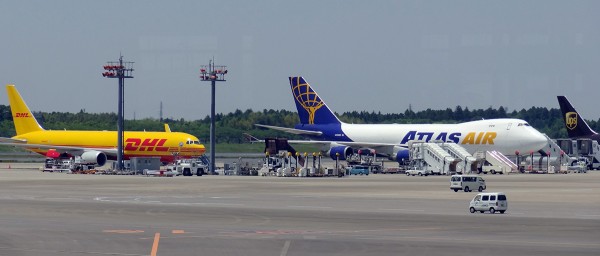 In the year to June 2014, Qantas, the Australian airline, posted record losses of $2.8 billion. The airline was seen to be in some serious trouble and engaged in various cost-cutting measures. This, together with help from falling oil prices appears to have reversed this company’s fortunes. It posted profits of $557 million in the year to the end of June 2015.
In the year to June 2014, Qantas, the Australian airline, posted record losses of $2.8 billion. The airline was seen to be in some serious trouble and engaged in various cost-cutting measures. This, together with help from falling oil prices appears to have reversed this company’s fortunes. It posted profits of $557 million in the year to the end of June 2015.
The airline industry was hit by the financial crisis and subsequent worldwide recession. Holidays are a luxury item, such that when incomes are rising, there is a greater demand for travel abroad. Conversely, when incomes fall (as we see in a recession) demand will fall and this can hurt the revenues and profits of airlines such as Qantas.  Qantas, in particular, had been struggling with a high degree of competition from other airlines, who are also competing on key long-haul routes, for example Emirates, Etihad and Singapore. Further competition came at home from Virgin Australia, who had significant backing from other large airlines and Qantas found itself unable to compete with such low prices and restrictions on foreign ownership.
Qantas, in particular, had been struggling with a high degree of competition from other airlines, who are also competing on key long-haul routes, for example Emirates, Etihad and Singapore. Further competition came at home from Virgin Australia, who had significant backing from other large airlines and Qantas found itself unable to compete with such low prices and restrictions on foreign ownership.
However, with significant layoffs, cancelling some unprofitable routes and various other cost-cutting measures, Qantas will return $505 million of profits to its shareholders and will purchase 8 Boeing 787-9 Dreamliners. This will certainly boost confidence in the company and its Chief Executive, Alan Joyce’s comments may well add to this. He said:
“We are halfway through the biggest and fastest transformation in our history … Without that transformation, we would not be reporting this strong profit, recommencing shareholder returns, or announcing our ultra-efficient Dreamliner fleet for Qantas International.”
Although the investment in so many new planes is a large outlay, it is expected that they will improve the efficiency of its fleet, reducing its fuel bill significantly, especially over its longest routes. As these profit figures only represent a job that is half done, it will be interesting to see how Qantas fares with the recovery of the global economy.
Qantas to buy eight Boeing dreamliners after posting profit of $557m The Guardian (20/8/15)
Qantas returns to full-year profit and pledges new growth phase BBC News (20/8/15)
Qantas soars past overhaul to return to profit Wall Street Journal, Rebecca Thurlow (20/8/15)
Qantas injects another $55 million into Jetstar Japan Sydney Morning Herald, Jamie Freed (24/8/15)
Is Qantas set to keep on soaring? Sydney Morning Herald, John Collett (21/8/15)
Qantas to expand fleet after rapid profit turnaround Reuters (20/8/15)
Qantas turnaround gains altitude with swing to profit Financial Times, Jamie Smyth (20/8/15)
Questions
- Into which market structure would you place the airlines industry?
- Consider the different strategies that were adopted by Qantas and in each case, explain whether it would have had an impact on the firm’s costs or revenues.
- Why was Virgin Australia proving to be such fierce competition for Qantas?
- The Wall Street Journal Article refers to Qantas finding it difficult ‘to attract a White Knight’. What is meant by a White Knight?
- What has been the impact of falling global oil prices on the airline industry? Use a diagram to explain your answer.
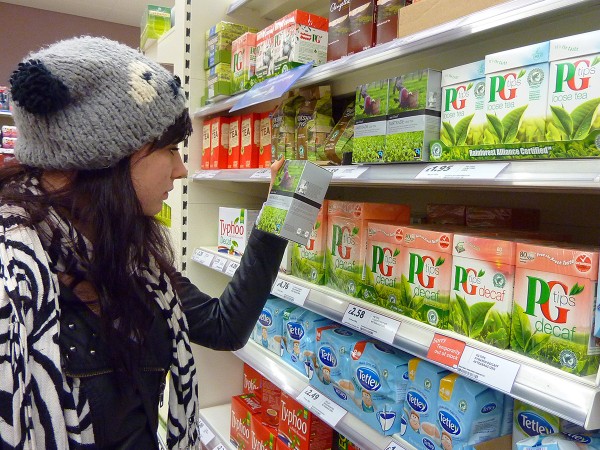 The retail food industry is an oligopoly – a market dominated by a few big firms, with interdependence between them. This means that each firm considers the reaction of all its competitors when making any decision. Pricing is one of those key decisions and this is one of the reasons why price wars tend to break out in this industry.
The retail food industry is an oligopoly – a market dominated by a few big firms, with interdependence between them. This means that each firm considers the reaction of all its competitors when making any decision. Pricing is one of those key decisions and this is one of the reasons why price wars tend to break out in this industry.
For consumers, price wars are usually seen as a good thing, as it means prices in the supermarkets get forced downwards, thus reducing the cost of living. Low prices in this case are one of the key benefits of competition. However, there are costs of such fierce competition for suppliers. 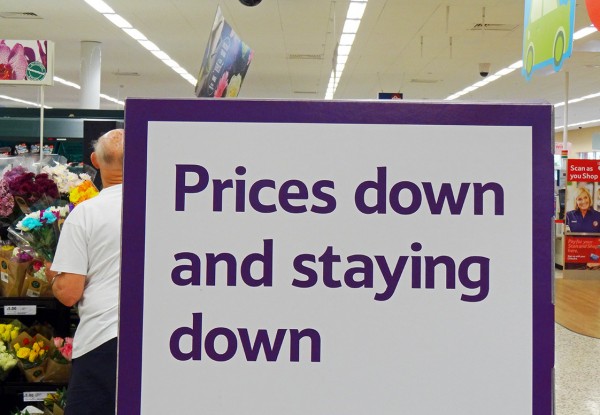 As final prices to customers are pushed down, small competitors are likely to feel the squeeze and may be forced out of the market. The other losers are suppliers. The big supermarkets are likely to pay lower prices to their suppliers, thus adversely affecting their livelihood. Research suggests that throughout 2014, 146 food producers entered insolvency, which is significantly higher than last year.
As final prices to customers are pushed down, small competitors are likely to feel the squeeze and may be forced out of the market. The other losers are suppliers. The big supermarkets are likely to pay lower prices to their suppliers, thus adversely affecting their livelihood. Research suggests that throughout 2014, 146 food producers entered insolvency, which is significantly higher than last year.
Accountancy firm, Moore Stephens, has blamed the supermarket price war for this rise in insolvencies in the food production sector. Duncan Swift from this firm said:
“The supermarkets are going through the bloodiest price war in nearly two decades and are using food producers as the cannon fodder…Supermarkets have engaged in questionable buying practices for years, but it’s getting worse and clearly wreaking havoc on the UK food production sector.”
The British Retail Consortium has said that placing the blame in this way was too simplistic. A commentator suggested that many suppliers have long-standing relationships with the supermarkets they deal with, suggesting that relations were good and sustainable.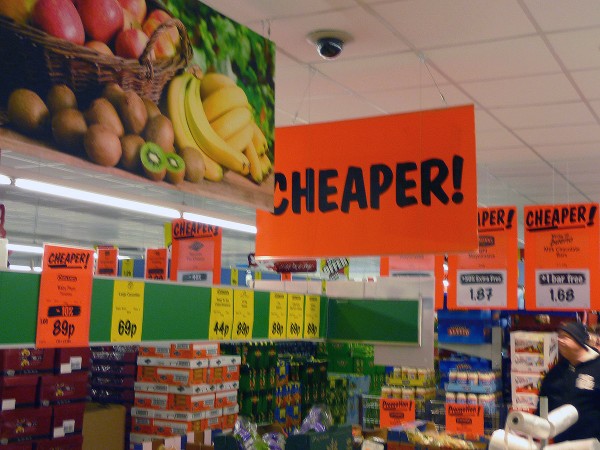 Furthermore, it was suggested that the demise of these producers may be due to many other factors and the data on insolvencies did not show that those firms affected were suppliers to the supermarkets. There is a Groceries Code Adjudicator in place to ensure that the supermarkets do not abuse their power when it comes to dealing with their suppliers, but the power of this person is limited, leaving suggestions remaining that suppliers are vulnerable. The following articles consider both the good and bad of price wars.
Furthermore, it was suggested that the demise of these producers may be due to many other factors and the data on insolvencies did not show that those firms affected were suppliers to the supermarkets. There is a Groceries Code Adjudicator in place to ensure that the supermarkets do not abuse their power when it comes to dealing with their suppliers, but the power of this person is limited, leaving suggestions remaining that suppliers are vulnerable. The following articles consider both the good and bad of price wars.
Articles
Questions
- What are the characteristics of an oligopoly? Why do price wars tend to break out in oligopolies, such as the supermarket industry?
- Apart from the supply-chain pressure from supermarkets, what other factors could have caused so many small food producers to become insolvent?
- How does the supermarket supply chain work and why have the price wars led to suppliers being squeezed?
- Use a diagram to illustrate the impact of the price war on (a) the supermarkets and (b) the suppliers.
- How important is the Groceries Code Adjudicator and should she be doing more to protect suppliers?
- If supermarkets are cutting prices, is this an indicator of unfair competition or good competition?
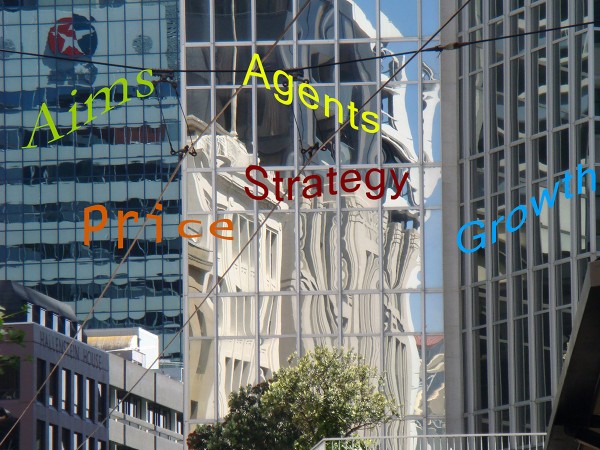 The market structure in which firms operate has important implications for prices, products, suppliers and profits. In competitive markets, we expect to see low prices, many firms competing with new innovations and firm behavior that is in, or at least not against the public interest. As a firm becomes dominant in a market, its behavior is likely to change and consumers and suppliers can be adversely affected. Is this the case with Amazon?
The market structure in which firms operate has important implications for prices, products, suppliers and profits. In competitive markets, we expect to see low prices, many firms competing with new innovations and firm behavior that is in, or at least not against the public interest. As a firm becomes dominant in a market, its behavior is likely to change and consumers and suppliers can be adversely affected. Is this the case with Amazon?
Much attention has been given to the dispute centering around Amazon and its actions in the market for e-books, where it holds close to two thirds of the market share. Critics of Amazon suggest that this is just one example of Amazon using its monopoly power to exploit consumers and suppliers, including the publishers and their authors. Although Amazon is not breaking any laws, there are suggestions that its behavior is ‘brutal’ and is taking advantage of consumers, suppliers and its workforce.
But rather than criticizing the actions of a monopolist like Amazon, should we instead be praising the company and its ability to compete other firms out of the market? One of the main reasons why consumers use Amazon to buy goods is that prices are cheap. So, in this respect, perhaps Amazon is not acting against consumers’ interests, as under a monopoly we typically expect low output and high prices, relative to a model of perfect competition. The question of the methods used to keep prices so low is another matter. Two conflicting views on Amazon can be seen from Annie Lowrey and Franklin Foer, who respectively said:
“Amazon relentlessly drives down prices for goods and services and delivers them fast and cheap. It ploughs its profits into price cuts and innovation rather than putting them in the hands of its investors. That benefits millions of families – full stop.”
“In effect, we’ve been thrust back 100 years to a time when the law was not up to the task of protecting the threats to democracy posed by monopoly; a time when the new nature of the corporation demanded a significant revision of government.”
So, with Amazon we have an interesting case of a monopolist, where many aspects of its behaviour fit exactly into the mould of the traditional monopolist. But, some of the outcomes we observe indicate a more competitive market. Paul Krugman has been relatively blunt in his opinion that Amazon’s dominance is bad for America. His comments are timely, given the recognition for Jean Tirole’s work in considering the problems faced when trying to regulate any firm that has significant market power. He has been awarded the Nobel Prize in Economics. I’ll leave you to decide where you place this company on the traditional spectrum of market structures, as you read the following articles.
Amazon: Monopoly or capitalist success story? BBC News, Kierran Petersen (14/10/14)
Why the Justice Department won’t go after Amazon, even though Paul Krugman thinks it’s hurting America Business Insider, Erin Fuchs (20/10/14)
Is Amazon a monopoly? The Week, Sergio Hernandez (19/11/14)
Big, bad Amazon The Economist (20/10/14)
Questions
- What are the typical characteristics of a monopoly? To what extent does Amazon fit into this market structure?
- Why does Paul Krugman suggest that Amazon is hurting America?
- How does Amazon’s behaviour with regard to (a) its suppliers and (b) its workers affect its profitability? Would it be able to behave in this way if it were a smaller company?
- Why is Amazon able to charge its customers such low prices? Why does it do this, given its market power?
- Is there an argument for more regulation of firms with such dominance in a market, as is the case with Amazon?
- The debate over e-books is ingoing. What is the argument for publishers to be able to set a minimum price? What is the argument against this?
- Should customers boycott Amazon in a protest over the alleged working conditions of Amazon factory employees?
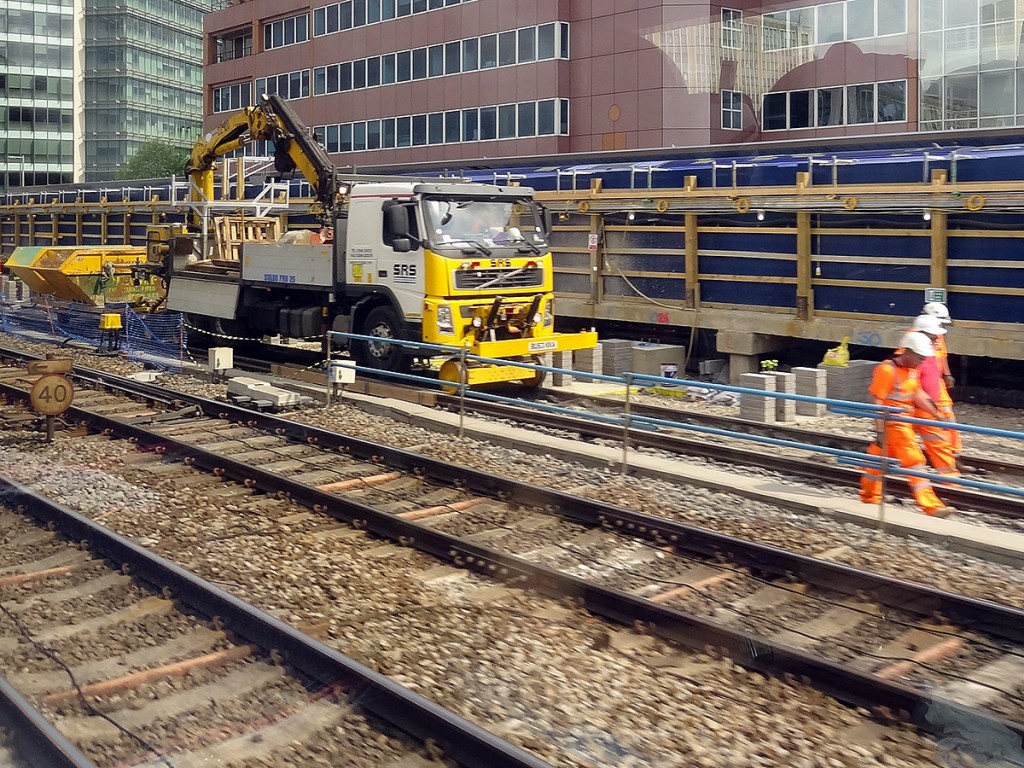 Over the past few decades, numerous areas within the British economy have been partly or fully privatized and one such case is British Rail. Why is this relevant now? We’re once again looking at the potential increase in rail fares across the country and the impact this will have on commuters and households. So, have the promises of privatisation – namely lower fares – actually materialised?
Over the past few decades, numerous areas within the British economy have been partly or fully privatized and one such case is British Rail. Why is this relevant now? We’re once again looking at the potential increase in rail fares across the country and the impact this will have on commuters and households. So, have the promises of privatisation – namely lower fares – actually materialised?
Comparing the increase in rail fares with that of the RPI makes for interesting reading. Data obtained back in January 2013 shows that since 1995, when the last set of British Rail fares were published, the RPI has been 66%, according to data from Barry Doe and this compares unfavourably with the increase in a single ticket from London to Manchester which had increased by over 200%. However, it compares favourably with a season ticket, which had only increased by 65%. In the last couple of years, increased in rail fares have been capped by the government to increase by no more than the rate of inflation. As such, customers are likely to be somewhat insulated from the increases that were expected, which could have ranged between 3 and 5%.
This announcement has been met with mixed reviews, with many in support of such caps and the benefit this will bring to working households, including Passenger Focus, the rail customer watchdog. Its Passenger Director, David Sidebottom said:
The capping of rail fare rises by inflation will be welcome news to passengers in England, especially those who rely on the train for work, as will the ban on train companies increasing some fares by more than the average. It is something we have been pushing for, for several years now and we are pleased that the Government has recognised the need to act to relieve the burden on passengers.
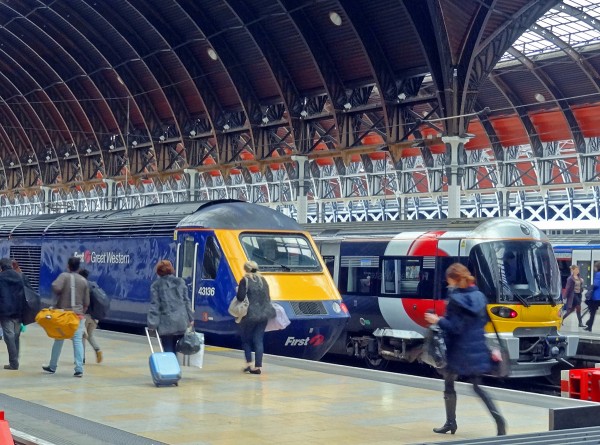 However, others have criticised the increases in rail fares, given the cost of living crisis and the potential 9% pay rise for MPs. The acting General Secretary of the RMT transport union commented:
However, others have criticised the increases in rail fares, given the cost of living crisis and the potential 9% pay rise for MPs. The acting General Secretary of the RMT transport union commented:
The announcement from George Osborne does not stack up to a freeze for millions of people whose incomes are stagnant due to years of austerity. To try and dress this up as benefiting working people is pure fraud on the part of the Government … Tomorrow, RMT will be out at stations across the north where some off-peak fares will double overnight.
Commuters in different parts of the country do face different prices and with some changes in peak travel times in the Northern part of the country, it is expected that some customers will see significant hikes in prices. Peak travel prices being higher is no surprise and there are justifiable reasons for this, but would such changes in peak times in the North have occurred had we still been under British Rail? Privatisation should bring more competition, lower prices and government revenue at the point of sale. Perhaps you might want to look in more detail at the actual to see whether or not you think the benefits of privatisation have actually emerged. The following articles consider the latest announcement regarding rail fares.
Rail fares to increase by 2.5% in January after Osborne caps price rises at no more than inflation Mail Online, Tom McTague (7/9/14)
Have train fares gone up or down since British Rail? BBC News, Tom Castella (22/1/13)
Rail fares to match inflation rate for another 12 months The Guardian (7/9/14)
Britain caps rail fares at inflation Reuters (7/9/14)
Regulated rail fares to increase by 3.5% in 2015 BBC News (19/8/14)
Northern commuters face big rise in fares for evening travel The Guardian, Gwyn Topham (7/9/14)
Commuter rail fares frozen again, says George Osborne BBC News (7/8/14)
Rail fares, the third payroll tax Financial Times, Jonathan Eley (22/8/14)
Questions
- What are the general advantages and disadvantages of privatisation, whether it is of British Rail or British Gas?
- Why is it that season tickets have increased by less than the RPI, but single tickets have increased by more?
- What are the conditions needed to allow train companies to charge a higher price at peak travel times?
- Are higher prices at peak times an example of price discrimination? Explain why or why not.
- In the Financial Times article, it is suggested that rail fares are like a payroll tax. What is a payroll tax and why are rail fares related to this? Does it suggest that the current method of setting rail fares is equitable?
- Based on the arguments contained in the articles, do you think the cap on rail fares is sufficient?
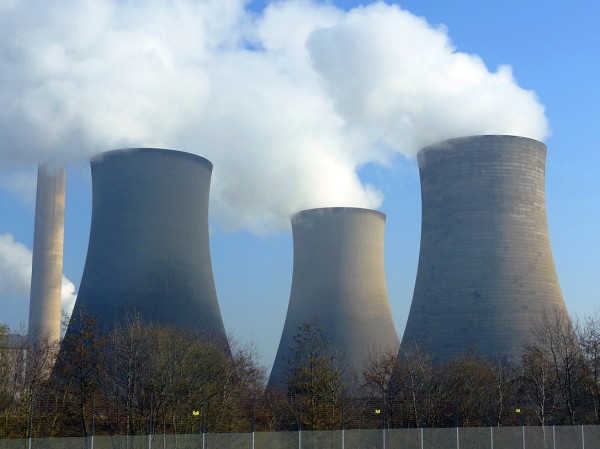 One example of an oligopoly was recently discussed on this blog –supermarkets. Here, is another classic example: the energy sector. It is dominated by six big firms, which hold the majority of the market in an industry with high barriers to entry; there is inter-dependence between the firms; and there are accusations of price fixing and collusion – all typical features of an oligopoly that may operate against consumers’ interests.
One example of an oligopoly was recently discussed on this blog –supermarkets. Here, is another classic example: the energy sector. It is dominated by six big firms, which hold the majority of the market in an industry with high barriers to entry; there is inter-dependence between the firms; and there are accusations of price fixing and collusion – all typical features of an oligopoly that may operate against consumers’ interests.
There have been numerous investigations into the actions of these energy providers, owing to their high prices, a lack of competition and significant profits. Developments in the industry have focused on reducing the barriers to entry created by the vertical integration of the incumbent firms in order to make it easier for new firms to enter, thus boosting competition.
However, the latest step is the biggest one, with the energy regulator, Ofgem, referring this industry to the Competition and Markets Authority (CMA). The investigation is likely to last 18 months and will ‘leave no stone unturned in establishing the truth behind energy prices’.
One of the key things that will be investigated is the accusation of profiteering and thus whether the big six should be broken up. This would inevitably lead to reductions in entry barriers and more opportunities for new firms to enter the market, thereby creating a much needed increase in competition. The Chief Executive of Ofgem, Dermot Nolan said:
Now is the right time to refer the energy market to the CMA for the benefit of consumers…There is near-unanimous support for a referral and the CMA investigation offers an important opportunity to clear the air. This will help rebuild consumer trust and confidence in the energy market as well as provide the certainty investors have called for.
Further comments were made about the energy sector and the future direction in terms of market reforms. This was another reason given for the referral to the CMA. Dermot Nolan added:
A CMA investigation should ensure there are no barriers to stop effective competition bearing down on prices and delivering the benefits of these changes to consumers.
The impact of this latest news will undoubtedly be felt by the big six, with share prices already taking a small hit, as investors start to look ahead to the potential outcome, despite any decision not being expected for a good 18 months. The following articles consider this latest energy market development.
Ofgem puts big six energy suppliers under CMA spotlight The Guardian, Terry Macalister (26/6/14)
Ofgem refers ‘big six’ energy groups for competition probe Financial Times, Claer Barrett (26/6/14)
U.K. energy regulator Ofgem asks for utilities probe Wall Street Journal, Selina Williams (26/6/14)
Energy probe could lead to ‘major structural change’ BBC News (26/6/14)
Probe into energy firms’ £100 per home profits The Telegraph, Emily Gosden (26/6/14)
UK competition watchdog kicks off energy suppliers probe Reuters (26/6/14)
Energy sharks may £101 profit per family: Major inquiry launched into power Mail Online, Sean Poulter (26/6/14)
Big six energy firms face full competition probe Independent, Simon Read (26/6/14)
Questions
- How well does the energy sector fit the structure of an oligopoly?
- What are the barriers to entry in the energy market? How can this referral to the CMA help to reduce them?
- Which factors determine the price of energy?
- The big six have been accused of profiteering. What is meant by this and why is it against the public interest?
- Why has it taken so long for such a referral to take place?
- In the BBC News article, the suggestion is that this investigation could lead to a ‘major structural change’. What is meant by this and why is it a possibility?
 In the year to June 2014, Qantas, the Australian airline, posted record losses of $2.8 billion. The airline was seen to be in some serious trouble and engaged in various cost-cutting measures. This, together with help from falling oil prices appears to have reversed this company’s fortunes. It posted profits of $557 million in the year to the end of June 2015.
In the year to June 2014, Qantas, the Australian airline, posted record losses of $2.8 billion. The airline was seen to be in some serious trouble and engaged in various cost-cutting measures. This, together with help from falling oil prices appears to have reversed this company’s fortunes. It posted profits of $557 million in the year to the end of June 2015. Qantas, in particular, had been struggling with a high degree of competition from other airlines, who are also competing on key long-haul routes, for example Emirates, Etihad and Singapore. Further competition came at home from Virgin Australia, who had significant backing from other large airlines and Qantas found itself unable to compete with such low prices and restrictions on foreign ownership.
Qantas, in particular, had been struggling with a high degree of competition from other airlines, who are also competing on key long-haul routes, for example Emirates, Etihad and Singapore. Further competition came at home from Virgin Australia, who had significant backing from other large airlines and Qantas found itself unable to compete with such low prices and restrictions on foreign ownership.





